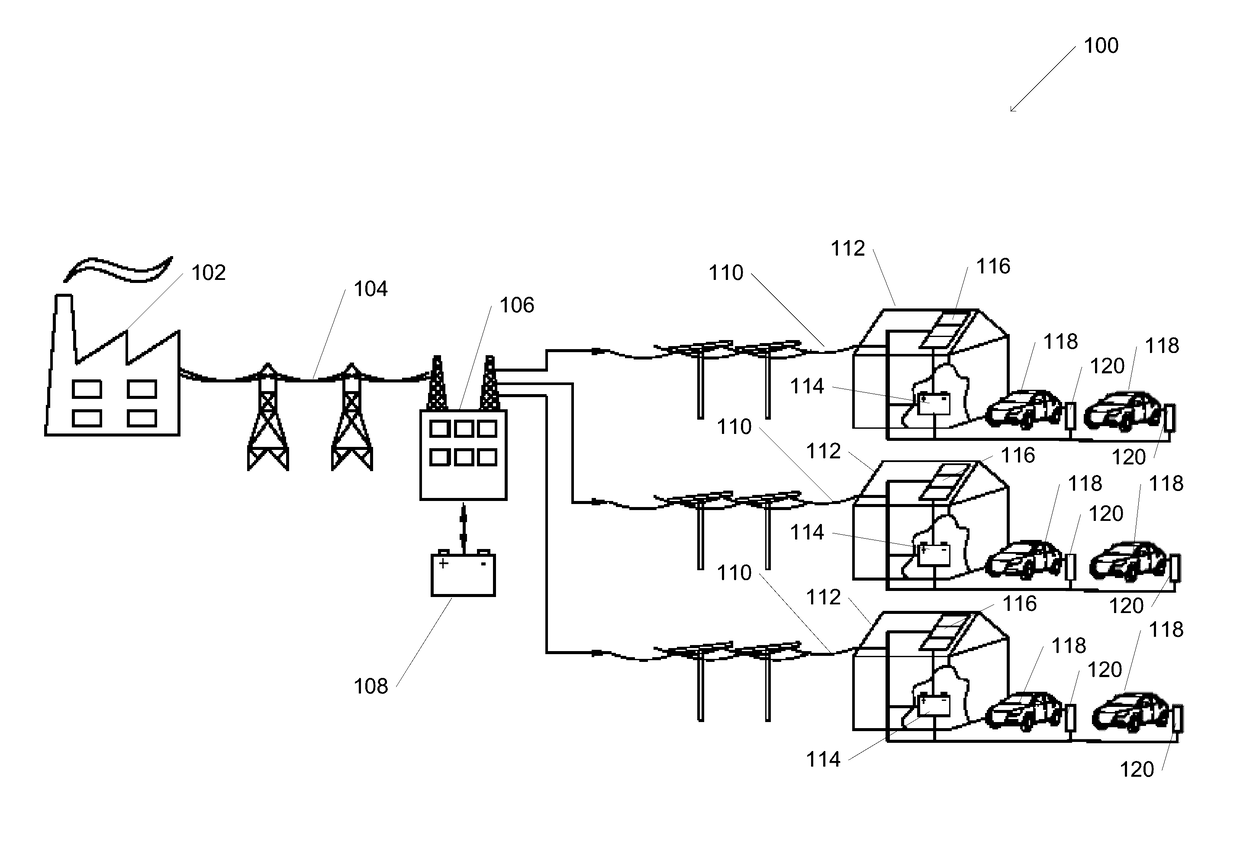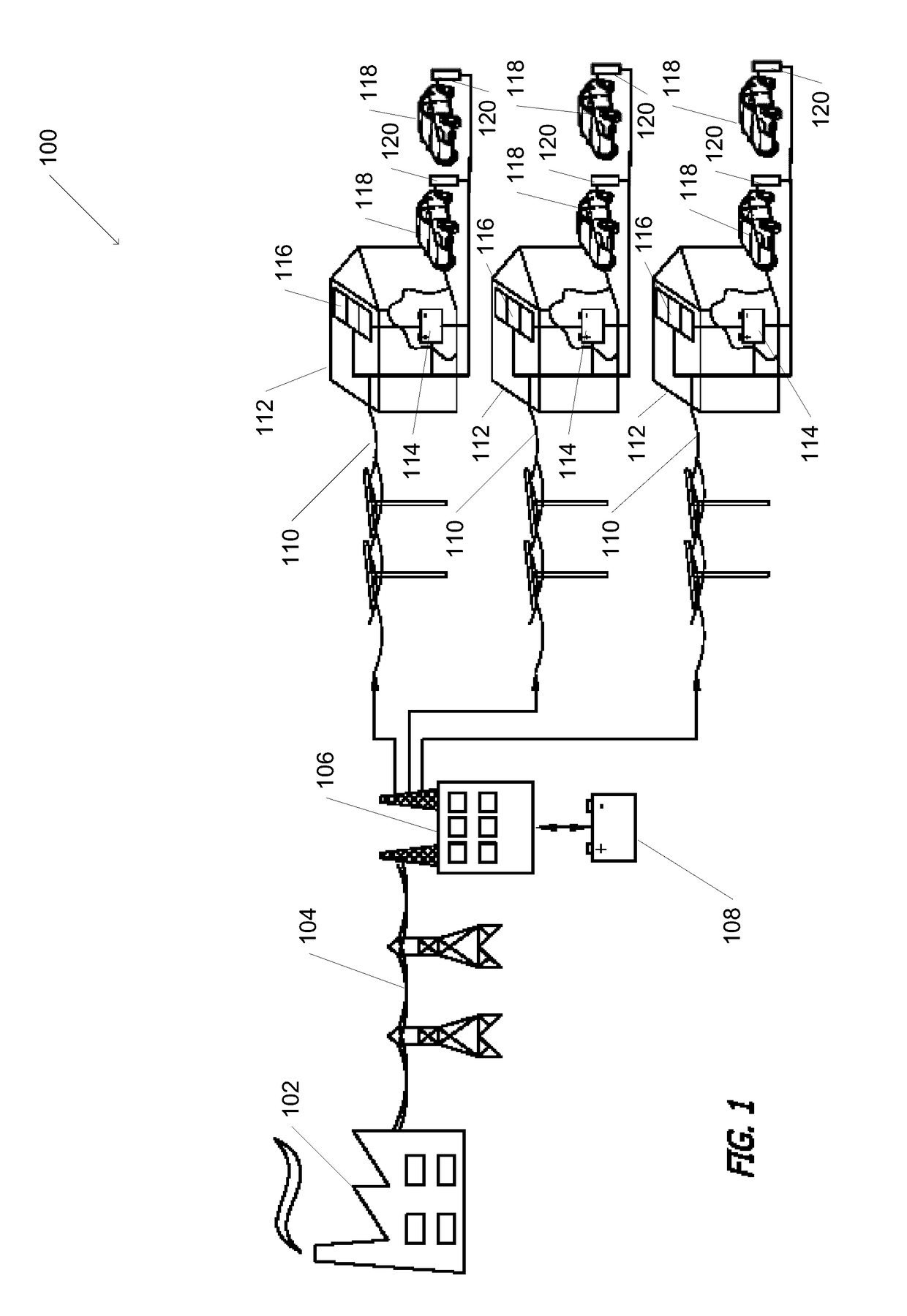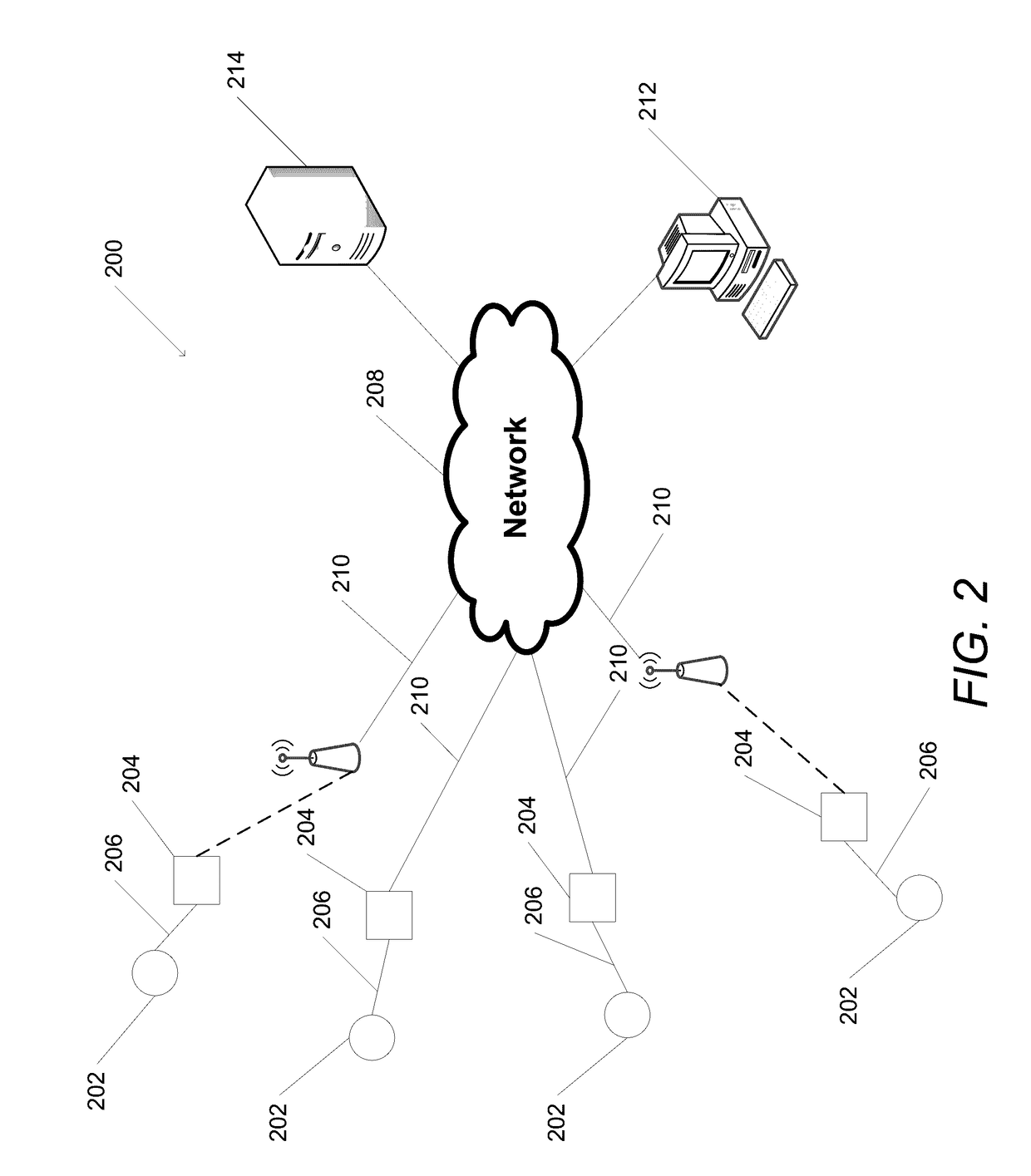Adaptive Charging Algorithms for a Network of Electric Vehicles
a charging algorithm and electric vehicle technology, applied in the field of electric vehicles, can solve the problems of bottlenecking the large-scale charging infrastructure, the installation cost of a new garage, and the cost of retrofitting existing parking spaces with l2 ev chargers, and achieve the effect of continuing to drop the price of ev chargers
- Summary
- Abstract
- Description
- Claims
- Application Information
AI Technical Summary
Benefits of technology
Problems solved by technology
Method used
Image
Examples
Embodiment Construction
[0042]Turning now to the drawings, systems and methods for adaptive charging of electric vehicles (EVs) at an electric charging station in accordance with embodiments of the invention are illustrated. Many charging stations can support the simultaneous charging of multiple EVs. Power can be distributed between the chargers at the charging station in a variety of manners.
[0043]An optimization problem can be utilized to increase the performance of the distribution of power between chargers to EVs at a charging station with respect to particular goals. The optimal charging (OPT) problem typically seeks to minimize one or more constraints including (but not limited to) an electricity cost, a revenue cost, a maximum charging delay, an asset utilization, a system robustness, and / or other operational constraints. The OPT problem can be solved when equilibrium points are found. In various embodiments, adaptive charging processes can be utilized to solve for these equilibrium points includin...
PUM
 Login to View More
Login to View More Abstract
Description
Claims
Application Information
 Login to View More
Login to View More - R&D
- Intellectual Property
- Life Sciences
- Materials
- Tech Scout
- Unparalleled Data Quality
- Higher Quality Content
- 60% Fewer Hallucinations
Browse by: Latest US Patents, China's latest patents, Technical Efficacy Thesaurus, Application Domain, Technology Topic, Popular Technical Reports.
© 2025 PatSnap. All rights reserved.Legal|Privacy policy|Modern Slavery Act Transparency Statement|Sitemap|About US| Contact US: help@patsnap.com



